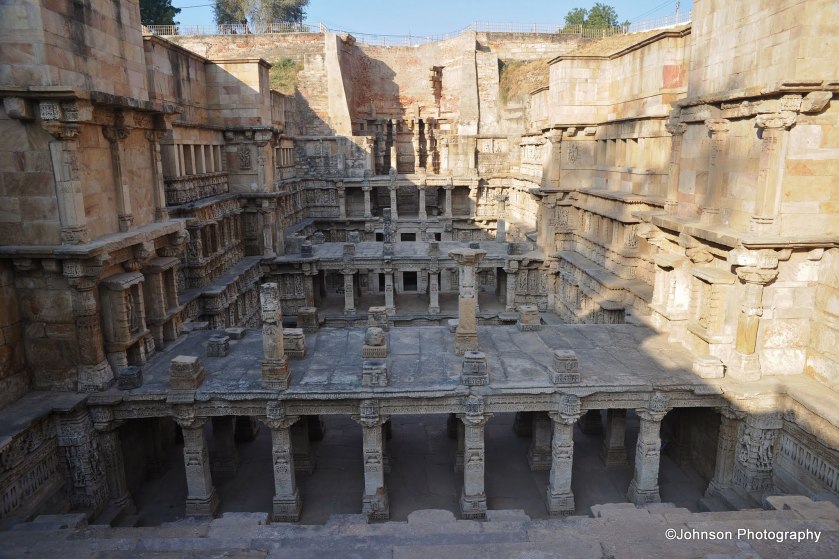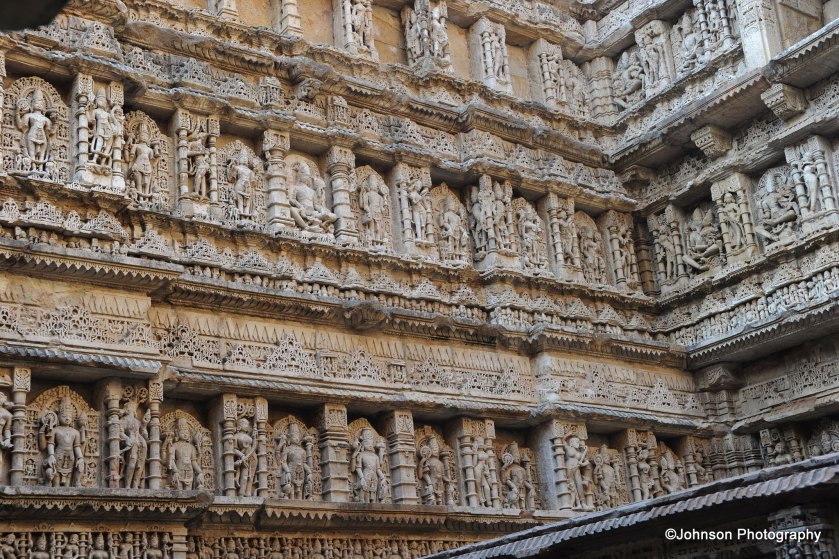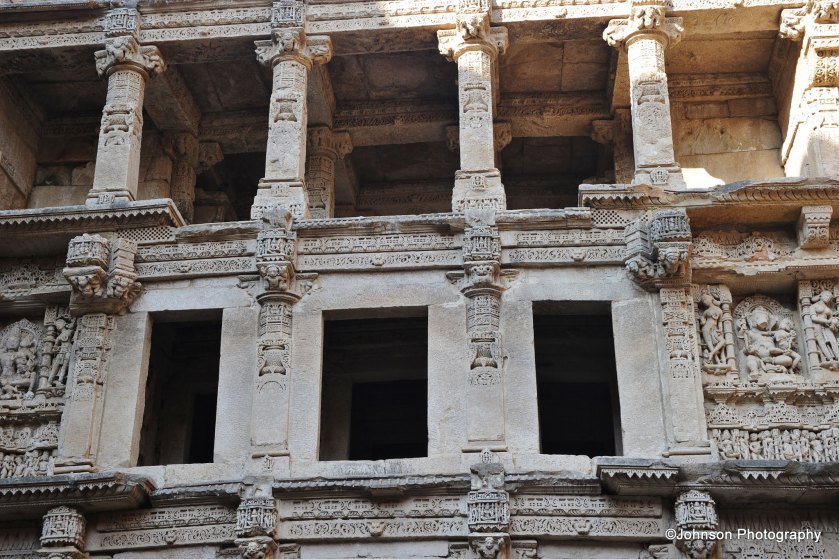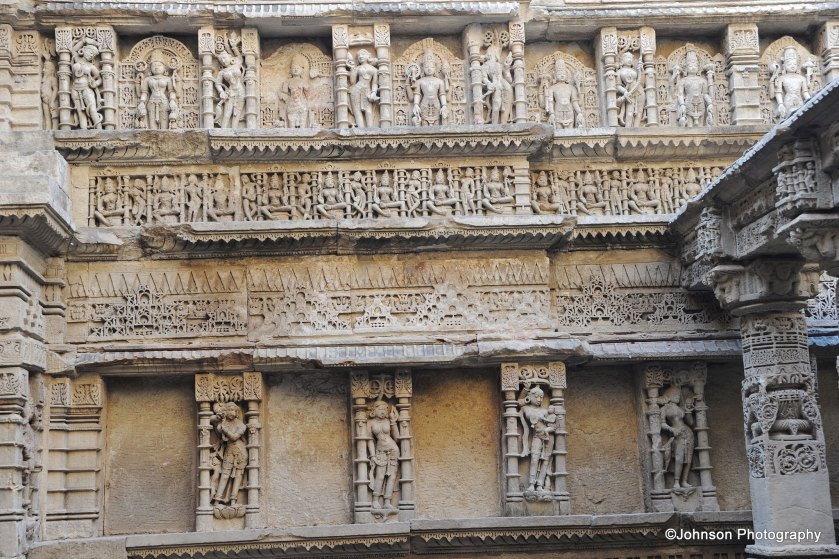Rani-ki-Vav is an intricately constructed stepwell situated in the town of Patan in the Indian state of Gujarat. Patan which lays about 130km northwest of Ahmedabad, was an ancient Hindu capital before being sacked by Mahmud of Ghazni in 1024 AD. Rani-ki-Vav is an excellent example of its former glory. This UNESCO World Heritage Site is situated on the banks of Saraswati River. This stepwell is the finest in Gujarat and remarkably well preserved after it was restored in the 1980s. It bagged the title of “Cleanest Iconic Place” in India at the Indian Sanitation Conference in October 2016.
This stepwell was constructed during the rule of the Chalukya dynasty. It is believed that it was built in memory of Bhima I (1022-1064AD) by his widowed queen Udayamati and probably completed by Udayamati and Karna after his death. The stepwell was later flooded by the nearby Saraswati River and silted over until the late 1980s.
Rani-ki-Vav was built in the Maru-Gurjara architectural style. This well measures approximately 64 m long, 20 m wide and 27 m deep. It consists of many pillared pavilions at seven different levels. Minute and exquisite carvings adorn the walls of the well. Most of the sculptures are in devotion to Vishnu depicted in his ten incarnations. It also depicts Nagkanya, Yogini and Apsaras. Apsaras are depicted in 16 different style of make-up to look more attractive which is called Solah-shringar.



























This stepwell was not merely a site for collecting water and socialising, but also hold great spiritual significance. It explicit the ancient concept of the sanctity of water and they considered it as an inverted temple. There are around 800 elaborate sculptures among seven galleries. At the bottom level there is a carving of Vishnu reclines on the thousand-hooded serpent. There is also a small gate below the last step of the step well, with a 30km tunnel (currently blocked by stones and mud), which leads to the town of Sidhpur near Patan. It was used as an escape gateway for the king, in times of defeat.
Rani-ki-Vav is situated in an earthquake prone area and due to this Archaeological Survey of India (ASI) has put it on high alert regarding the risk preparedness and disaster management. Only the top 2 levels of the well are accessible to the visitors and the rest of the areas are out of bound to the visitors.

Its intriguing to note that both in ancient Indian and Indo-European cultures, the use of nudity of near nudity in sculpting is quite acceptable. Contrast this to the north Asian cultures of China and Japan where this is frowned upon!
LikeLike
Yes.
LikeLiked by 1 person
Amazing beautiful work 😀
LikeLike
Thanks.
LikeLiked by 1 person
It looks amazing!
LikeLike
Thanks for your comments
LikeLiked by 1 person
Such detail, amazingly well preserved.
LikeLiked by 1 person
Thanks for your visit and comments.
LikeLike
Superbes photos ! Elles donnent vraiment envie d’y aller voir soi-même !
LikeLike
Thank you very much for stopping by and commenting.
LikeLiked by 1 person
Absolutely beautiful!
LikeLike
Thank you very much, my dear friend.
LikeLiked by 1 person
Wonderful carvings! So impressive.
LikeLike
Thanks.
LikeLiked by 1 person
great post and brilliant carvings
LikeLike
Thanks.
LikeLike
Probably one of the best step well around. Thanks for posting out here
LikeLike
Yes, thanks.
LikeLike
Its beautiful n images are superb.
LikeLike
Thank you very much
LikeLiked by 1 person
Great post, wonderfull carvings. Thanks.
LikeLike
Thank you very much for stopping by and commenting.
LikeLiked by 1 person
Great…😚🤗😄
LikeLike
Thanks.
LikeLiked by 1 person